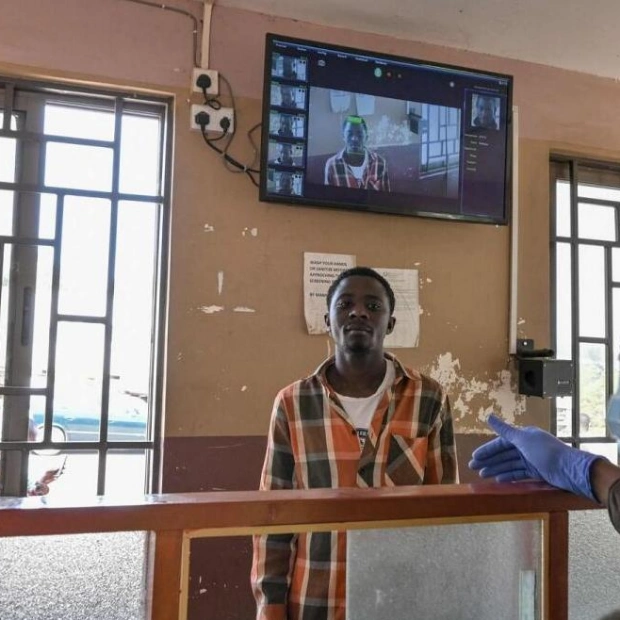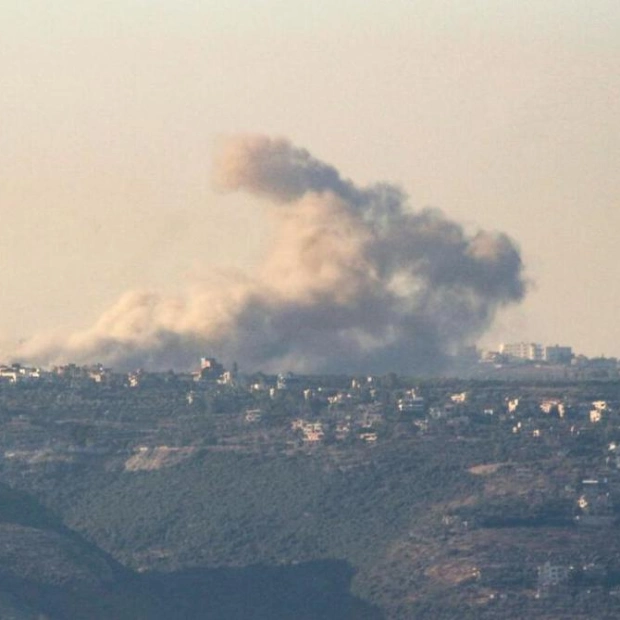A Palestinian woman grieves over relatives who were killed in an Israeli strike on Al Bureij refugee camp, during their funeral at Al Aqsa Martyrs hospital in Deir Al Balah in the central Gaza Strip on October 13, 2024. — AFP
Israeli forces expanded their raid into northern Gaza, with tanks reaching the northern edge of Gaza City. They pounded several districts in the Sheikh Radwan neighborhood, forcing many families to evacuate their homes, according to residents. Israeli forces have effectively cut off Beit Hanoun, Jabalia, and Beit Lahiya in the far north of the enclave from Gaza City, allowing access only with their permission for families complying with evacuation orders.
Nine days into a major Israeli operation in northern Gaza, the Hamas-run Gaza government media office reported that Israeli strikes had killed around 300 Palestinians. The office claimed that Israel's bombardment of civilian houses and displacement shelters aimed to force residents to permanently leave Gaza, a claim Israel denies. Gaza's health ministry confirmed dozens of deaths in the assaults on northern areas, with many more feared dead on roads and under the rubble of houses beyond the reach of medical teams.
Many residents of Jabalia posted on social media: "We will not leave, we die, and we don't leave." The northern part of Gaza, home to over half of the territory's 2.3 million people, was devastated in the first phase of Israel's assault a year ago, following the October 7 attacks on Israeli towns by militants who killed 1,200 people and captured 250 hostages.
After a year of Israeli assaults that killed 42,000 Palestinians, hundreds of thousands of residents returned to the ruined northern areas. Israel sent troops back more than a week ago to eliminate fighters they claimed were regrouping for more attacks. Hamas denies that fighters operate among civilians.
The escalation in northern Gaza coincides with a massive Israeli air and ground campaign in southern Lebanon against Hezbollah, another ally of Iran. "As the world focuses on Lebanon and a possible Israeli strike against Iran, Israel is wiping out Jabalia," said Nasser, a resident of Beit Lahiya in the northern Gaza Strip. "The occupation is destroying roads and residential districts. People are trapped inside their homes, fearing bombs could fall at any moment," he told Reuters via a chat app.
While the main assault is on the north, Israel is also targeting other areas across the Gaza Strip. The health ministry reported at least 11 deaths by late morning on Sunday, including at least six killed in a house in Bureij camp in the central Gaza Strip, south of Gaza City. The Israeli military stated that forces operating throughout the Gaza Strip in the past 24 hours had attacked about 40 targets and killed dozens of militants.
The armed wings of Hamas, the Islamic Jihad, and other factions claimed their fighters attacked Israeli forces in Jabalia and nearby areas with anti-tank rockets and mortar fire. Palestinian and United Nations officials say there are no safe areas in Gaza. They also expressed concerns over severe shortages of food, fuel, and medical supplies in northern Gaza, warning of a potential famine.
Some tank shells landed in the streets of the Gaza City suburb of Sheikh Radwan, where tanks arrived at the edges of the territory, causing panic among the population further south. In the southern Gaza Strip, Israeli authorities released 12 Palestinians detained during the ground offensive, according to local border officials. Freed detainees have alleged torture and ill-treatment while in Israeli detention, claims Israel denies.






